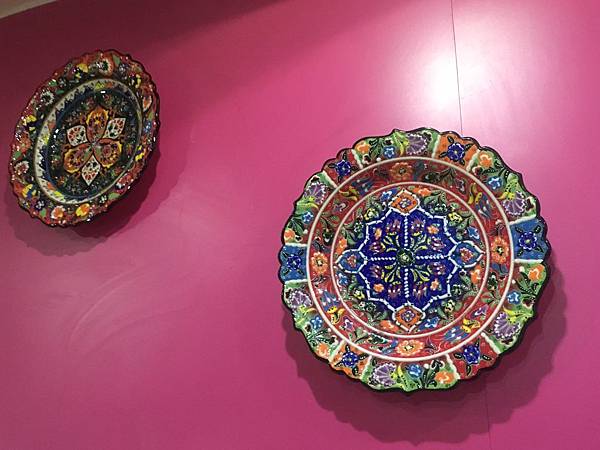
睽違四年有機會再次品嘗土耳其料理感到特別珍惜,土耳其料理融會中亞、西亞、南亞、非洲國家飲食文化,吸收希臘、中東美食特色,被稱作世界三大菜系。土耳其料理嚐起層次豐富又十分溫暖,也很符合我們飲食的口味。
點了轉燒雞肉卡巴捲、拉馬村薄餅,前者香氣誘人,雞肉軟嫩,不管加上蒜蓉、薄荷、辣椒調味醬都非常適合。拉馬村薄餅將肉與蔬菜切得細碎,餅皮有嚼勁,包上沾有萊姆香氣的沙拉一起吃,混合著細膩與爽脆的口感。

印象最深刻的莫過於甜點庫納法(Kanafeh),上下層用碎屑小麥餅(土耳其麵條)包覆中間的乳酪,兩面兼得金黃酥脆,熱騰騰端上桌後老闆澆上糖漿。與兩面黃有異曲同工之妙,但土耳其的Kanafeh麵條就像椰絲一樣細緻,中間多了牽絲濃郁的乳酪,味道更加立體。
驚艷於土耳其料理的深奧,興起查起土耳其文的謝謝、好吃怎麼說,光是謝謝的音節之多,跟俄文有得比。沒想到被老闆用廣東話問:「好食?」。想現學現賣說一聲「teşekkürler ederim」,卻太害羞說不出口。老闆教了我們一句簡易版的謝謝「sağol」。
至今接觸土耳其文化的機會寥寥可數,但每次都感受到人情味,留下很好的印象,還記得在異鄉窮學生時代和同學被招待的土耳其紅茶,小小一杯,捧起來卻備感溫熱。
也想起了上一次吃土耳其料理是全家聚餐,溫馨的家庭記憶浮現,回首家人對自己無私的支持與愛是多麼珍貴而令人感恩呀!

Turkish Cuisine
It has been four years since last time I ate Turkish cuisine, so I cherish this opportunity to savour this delicious food. Turkish cuisine merges culinary culture from the Middle East, South Asia, and Africa. Besides, as one of the three great cuisines in the world, Turkish cuisine has some features of Greek cuisine and the Mediterranean diet. Turkish cuisine has rich layers of flavor and its warmth is to the taste of those who are accustomed to Chinese cuisine.

My colleague and I ordered chicken doner roll and Lahmacun. The former smelled very good tempting our appetite, and the chicken was soft and juicy. It fitted whichever mint source, garlic source or chili source.
Lahmacun was a round, thin piece of dough topped with minced meat and vegetable. It tasted rich combining the chewy dough with the crispy salad and drizzled with the fragrance of lime.
What impressed me the most is the dessert “Kanafeh” made with thin noodle-like pastry fried until golden and crunchy. The waiter basted the syrup soon after serving this dish.It reminded me of fried noodles with sour source and sugar. However, the noodle of Kanafeh was as thin as shredded coconuts and with stringy cheese in the middle. So the texture was more delicate.

Surprised by the profound Turkish cuisine, I looked up how to say “thank you” and “delicious” in Turkish.The words seemed to have as many as Russian, both of which were difficult to read. Guessing what we wanted to say, the waiter asked us “好食(delicious)? ”in Cantonese. We wanted to say “teşekkürler ederim” but were too shy to say it well. He taught us an easier version of “Thanks”-“sağol”.
I didn't get much chance to know more about Turkish culture, but every time I approached Turkish people, I felt their hospitality which left a good impression to on me. I still remember when I was a poor student in foreign country, a waiter gave me a cup of Turkish tea. It did not only warm my body but my heart also.
The memory of eating Turkish cuisine with my family came into my mind, too. The heartwarming moments are invaluable. I sincerely appreciate my family’s deep love and selfless support.



 留言列表
留言列表


